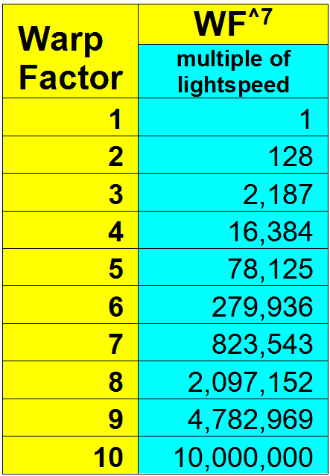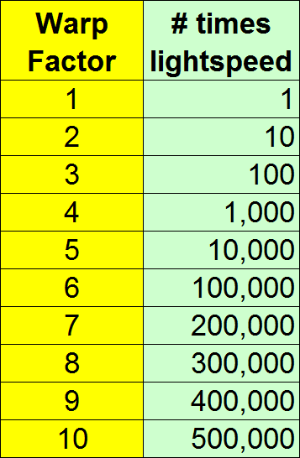Interesting! I've often presumed that the Enterprise (in that episode) was able to achieve such a high speed because it was "piggybacking" along the subspace corridor effect left by the alien transporter beam which moved the ship 997 light years in the first place (technology that fierce must generate a considerable after effect).
Maybe the NuEnterprise's engines are able to generate a localised weakness in the subspace layer, allowing it to achieve massively higher speeds than their TOS equivalent? I'm sure this eventually causes massive damage to local subspace (as illustrated in that TNG episode) but that's OK - it's analogous to the environmental damage caused in the 20th Century by early combustion engines; no-one knew better!
Maybe the NuEnterprise's engines are able to generate a localised weakness in the subspace layer, allowing it to achieve massively higher speeds than their TOS equivalent? I'm sure this eventually causes massive damage to local subspace (as illustrated in that TNG episode) but that's OK - it's analogous to the environmental damage caused in the 20th Century by early combustion engines; no-one knew better!





 In any case, I'm enjoying where this current discussion is going more.
In any case, I'm enjoying where this current discussion is going more.







